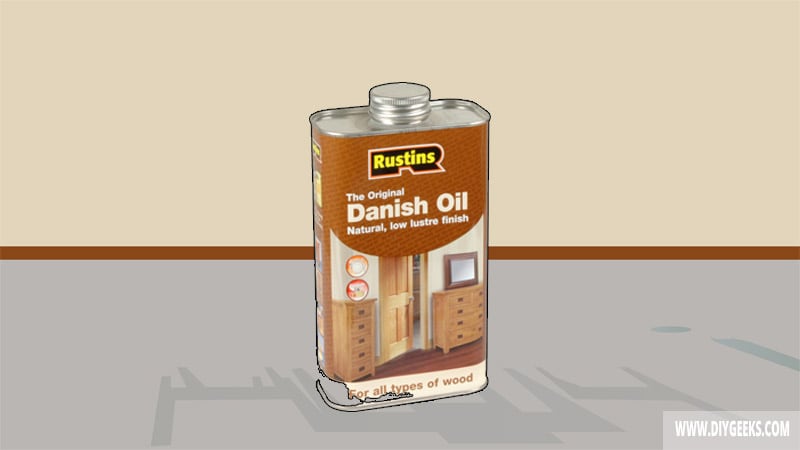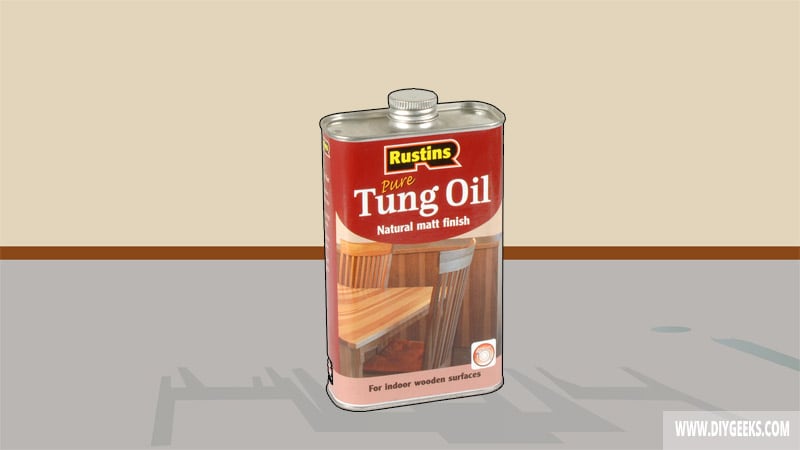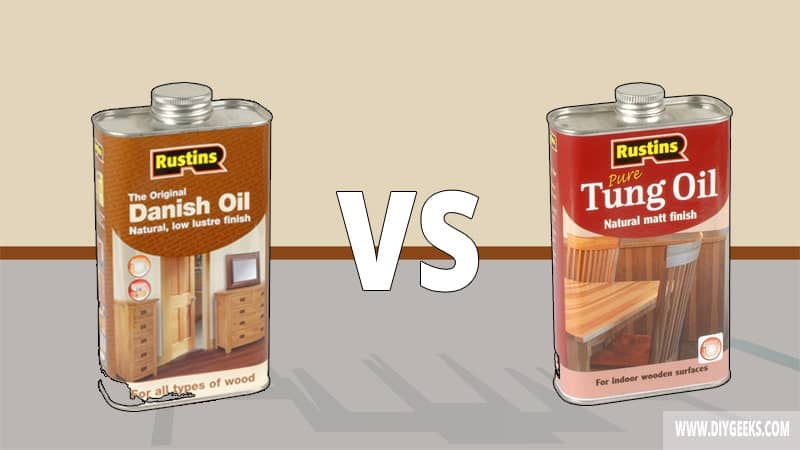Danish oil is a synthetic wood oil made by mixing different wood oils and varnishes. Tung oil is a natural wood oil originating from the Chinese Tung Tree (Vernicia Fordii).
Danish oil penetrates wood better, requires fewer coats, and has a faster dry time than Tung Oil. Tung Oil has better wood protection and water resistance than Danish Oil.
What is Danish Oil?

Danish oil is a synthetic wood oil made by mixing different oils, varnishes, binders, and drying agents. It forms a low water-resistant layer that protects wood from scratches, dents, and water when dry. It has a hard satin or semi-gloss finish.
You can use Danish oil for the following things.
- On bare wood since it penetrates wood well.
- To protect wood floors from scratches and other damage.
- To protect surfaces from moisture.
- You can tint it to produce a colorful finish.
- As a primer, finish, or top coat on the wood.
- On bare wood since the wood oil has impressive wood penetration.
- If you need a fast-drying wood finish.
- If you want a semi-gloss or satin finish.
- For indoor and low-traffic surfaces.
What is Tung Oil?

Tung oil is a natural wood oil obtained by mechanically pressing the seeds of the Chinese Tung Tree (Vernicia Fordii). Raw Tung oil has a thick viscosity, but it’s thinned with mineral spirits before applying it.
It penetrates the wood pores and creates a glossy gold-like finish that protects the surface from water, scratches, and moisture.
You can use Tung Oil for the following things.
- To protect the wood from water.
- To give wood a gold-tinted and glossy finish.
- If you want to highlight detail work, carvings, and the natural wood grain.
- To enhance the color of the wood.
- For moisture-prone surfaces.
- For busy and high-traffic surfaces.
Danish Oil vs Tung Oil
The differences between Danish oil and tung oil are listed below.
Wood Protection
Tung oil offers better wood protection than Danish oil its particles dry harder and stronger.
Danish oil is a water-resistant finish that can withstand water for a short period. But, its finish will get removed if exposed to constant water. Tung oil has a water-resistant finish that withstands water for a longer period as its particles have more time to harden and compact since it has a longer dry time.
Water Resistance
Tung oil offers better water resistance than Danish oil. Danish oil has a water-resistant finish but its finish can’t withstand water for long periods because it will get removed.
Wood Penetration
Danish oil penetrates wooden surfaces better than Tung oil as it has a thinner viscosity.
Tung oil has poor wood penetration as it has a thick viscosity that doesn’t penetrate wood pores deeply. You must thin Tung oil with mineral spirits before applying it over wood
Number of Coats
You need between 2-4 Danish oil coats and between 2-6 Tung oil coats.
The Dry Time
Danish oil dries faster than Tung oil as it has a thinner viscosity and is formulated with quick-drying solvents.
Danish oil takes around 2 hours to dry while Tung oil takes around 24 hours to dry between coats.
Finish Type
Danish oil creates a satin and semi-transparent finish that can be tinted with different color shades. Its finish tends to yellow or develop an amber-like color shade gradually.
Tung oil creates a hard gold color shade finish that is glossy and reflective.


